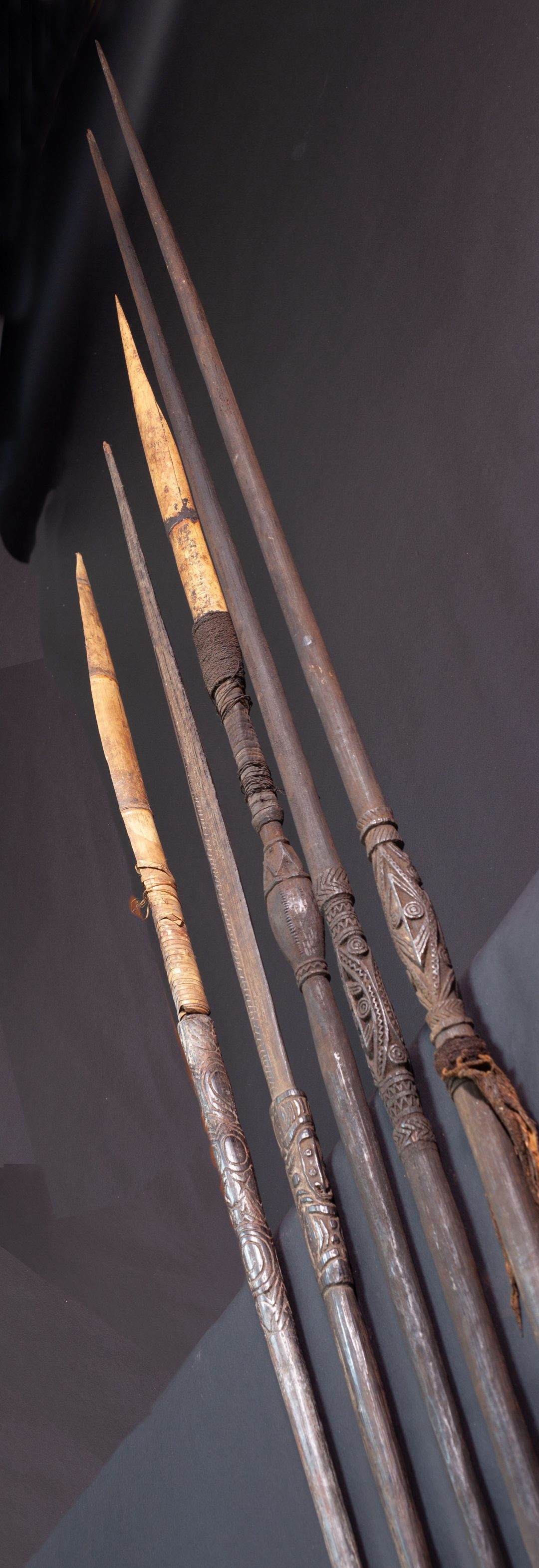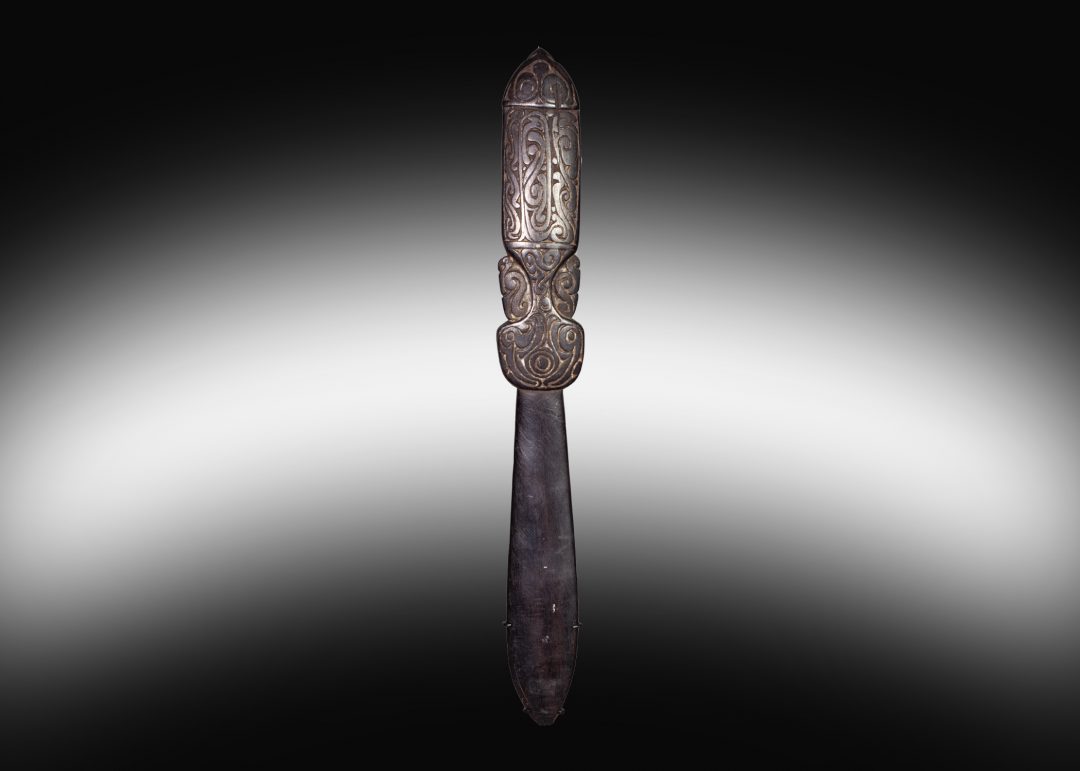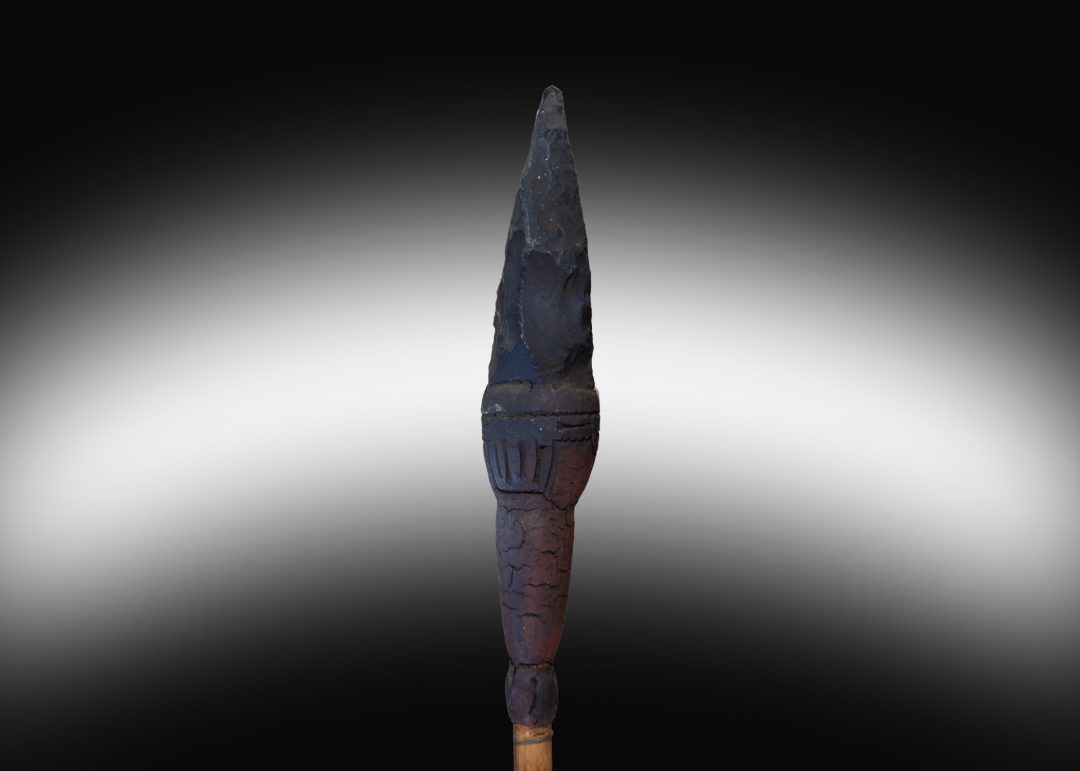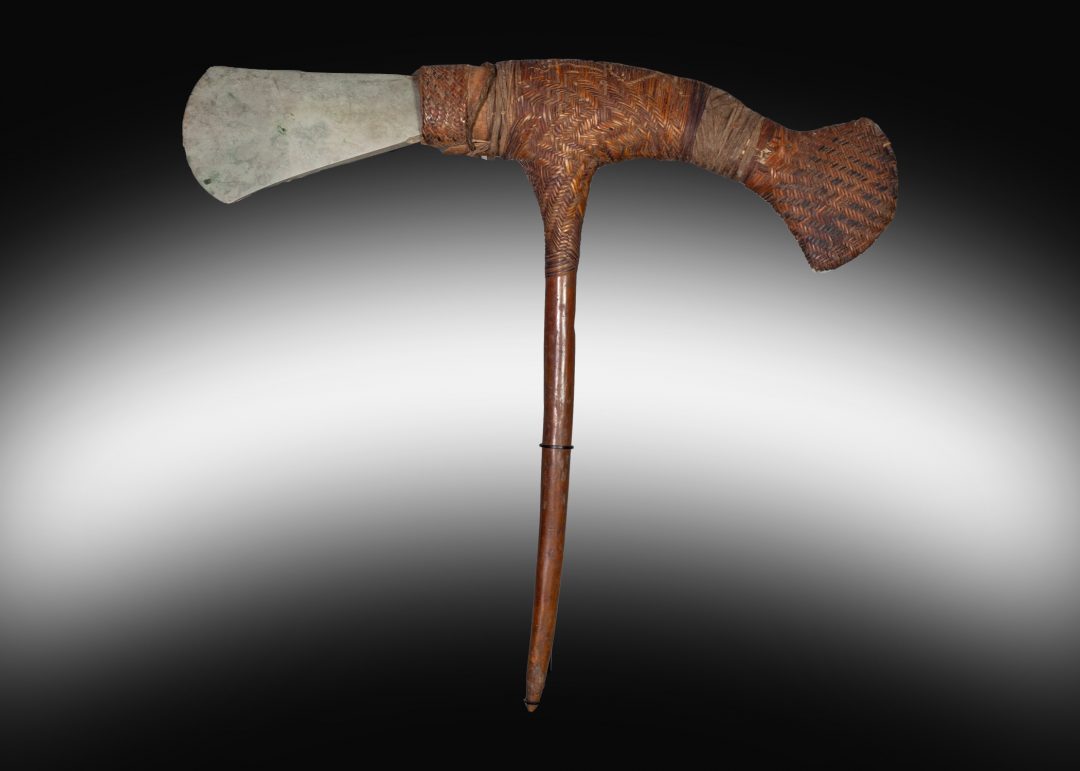Ancestral Wooden Skull
-
TitleAncestral Wooden Skull
-
LocationEast Sepik Province, Middle Sepik River, Iatmul people
-
DateEarly 1950s
- Size24cm (L) x 17cm (W) x 39cm (H)
-
Price$1,800.00
This is a very powerful sculpture of a head. Its exact function is unknown. Sometimes this style of head was carved as a replacement for over modelled skulls which were associated with tribal warfare and headhunting, but was banned by the colonial administration in the 1920s. It’s interesting to note that although outlawed the practice did continue but was carried out in secrecy. Alternatively wooden over modelled skulls were made to symbolize the practice.
According to Sabine Jell Bahisen in the documentary “Skull Art of Papua New Guinea”. “‘ A skull-portrait commemorates an initiate’s first kill, a great warrior, a fierce enemy, an extraordinary, or beautiful person. The portrait honors a deceased person – friend or foe – and is held in high esteem. Sepik societies are known for their artistic wealth, but also as fierce warriors. The Iatmul people of the middle Sepik are the most prominent. Headhunting was once their major pastime, indulged like a sport, and feared by their neighbors. Among these warriors, killing an enemy was regarded as an adult man’s duty, a source of male pride, and a symbol of masculine identity. Ritualized homicide was part of initiation. Skull art belongs to the spirit house, “Haus Tambaran”. Adult men spend most of their time there. Only fully initiated, adult men are allowed into the men’s house. The “Haus Tambaran” is the venue for all major male activities, including meetings, artistic exploits, religious rituals, and initiation ceremonies. Several long stones in front of the “Haus Tambaran” once served as sacred locations where a slain enemy’s head was ritually severed from his body. Warriors’ heads once provided the physical and spiritual foundations of Sepik society and its spirit houses. Skulls were buried under a “Haus Tambaran’s” major supporting posts, adorned its cornices and windows, were kept inside on special shelves and skull racks, displayed, and carried around on special dance wards during funerary rites. “‘
This head has a beautifully deeply incised design, the off set eyes were deliberately intended by the carver and adds to the visual tension of the work. The mask is in excellent condition and displayed on a custom metal stand
This is a very powerful sculpture of a head. Its exact function is unknown. Sometimes this style of head was carved as a replacement for over modelled skulls which were associated with tribal warfare and headhunting, but was banned by the colonial administration in the 1920s. It’s interesting to note that although outlawed the practice did continue but was carried out in secrecy. Alternatively wooden over modelled skulls were made to symbolize the practice.
According to Sabine Jell Bahisen in the documentary “Skull Art of Papua New Guinea”. “‘ A skull-portrait commemorates an initiate’s first kill, a great warrior, a fierce enemy, an extraordinary, or beautiful person. The portrait honors a deceased person – friend or foe – and is held in high esteem. Sepik societies are known for their artistic wealth, but also as fierce warriors. The Iatmul people of the middle Sepik are the most prominent. Headhunting was once their major pastime, indulged like a sport, and feared by their neighbors. Among these warriors, killing an enemy was regarded as an adult man’s duty, a source of male pride, and a symbol of masculine identity. Ritualized homicide was part of initiation. Skull art belongs to the spirit house, “Haus Tambaran”. Adult men spend most of their time there. Only fully initiated, adult men are allowed into the men’s house. The “Haus Tambaran” is the venue for all major male activities, including meetings, artistic exploits, religious rituals, and initiation ceremonies. Several long stones in front of the “Haus Tambaran” once served as sacred locations where a slain enemy’s head was ritually severed from his body. Warriors’ heads once provided the physical and spiritual foundations of Sepik society and its spirit houses. Skulls were buried under a “Haus Tambaran’s” major supporting posts, adorned its cornices and windows, were kept inside on special shelves and skull racks, displayed, and carried around on special dance wards during funerary rites. “‘
This head has a beautifully deeply incised design, the off set eyes were deliberately intended by the carver and adds to the visual tension of the work. The mask is in excellent condition and displayed on a custom metal stand












